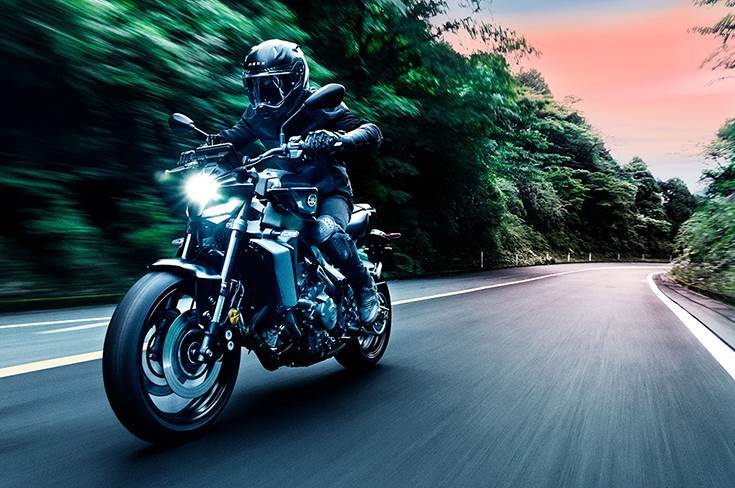Yamaha Motor Co has announced development of the new Y-AMT (Yamaha Automated Manual Transmission), which automates a motorcycle’s clutch and gearshift operations when starting out and while riding with sophisticated electronic control. This will be featured in the new MT-09 Y-AMT set to be released in Japan by the end of this year.
Y-AMT is a newly developed automated manual transmission that does away with the clutch lever and shift pedal. By consolidating shift operations into a lever on the handlebars, it allows for more intuitive gear changes. This frees the rider from clutch and shift pedal operations, enhancing the enjoyment of controlling motorcycle at will and contributing to an improved riding experience.
In addition to the manual MT mode where the rider hand-operates the lever to shift gears, the system also has an automatic AT mode that automates gear changes, allowing the rider to select the mode according to different road environments, such as city streets, highways, or winding roads, or the rider’s own condition, changes in weather, and so on. Both MT and AT modes feature quick response, providing consistent expert-level gear changes without any compromise to sporty performance.
 Yamaha AMT will first go on to the new MT-09 Y-AMT, which is set to be launched in Japan by the end of this year.
Yamaha AMT will first go on to the new MT-09 Y-AMT, which is set to be launched in Japan by the end of this year.
Swift and responsive gearshifting mechanism with little shift shock
Gearchanges in manual transmission motorcycles are performed by operating the clutch with the left hand and shifting with the left foot. Y-AMT automates gear changes by having actuators perform these actions. As the mechanism replaces rider operation without making any major changes to the base manual transmission, the direct and satisfying shifting feel that manual transmissions are loved for is retained.
When changing gears, the engine control unit (ECU) and the motor control unit (MCU) governing the actuators communicate and coordinate with each other. The ECU controls engine ignition/fuel injection when upshifting and the electronic throttle when downshifting. The MCU also instructs the actuators to perform optimal shifting and clutch operations.
Optimal control at high rpm is achieved by not fully disengaging the clutch according to the situation, shift times are made shorter by building a spring into the shift rod, and together with the aforementioned engine and clutch control, Y-AMT delivers both quick gear changes and reduced shift shock, providing a natural shifting feel more in line with rider expectations.
 MT mode allows for gear changes just as quick and smooth as a manual transmission, freeing the rider from the need to operate a clutch or shift pedal.
MT mode allows for gear changes just as quick and smooth as a manual transmission, freeing the rider from the need to operate a clutch or shift pedal.
Y-AMT is equipped with an MT mode that allows manual shifting, as well as an AT mode that automates shifting gears. Mode switching is done using the AT/MT button on the handlebar switch box.
MT mode allows for gear changes just as quick and smooth as a manual transmission, freeing the rider from the need to operate a clutch or shift pedal. By simply operating the shift lever with the throttle open, the rider can enjoy exhilarating acceleration that makes the most of the engine’s performance.
It also contributes to improved stability when cornering by suppressing gear shift shock, enables a better feel of support for the lower body by eliminating the need to operate the shift pedal, and greater freedom of riding position.
In AT mode, the optimum gear is automatically selected according to vehicle speed and throttle opening, so the rider only has to operate the throttle and brakes. This mode significantly reduces the operational burden on the rider when riding in urban areas or on long tours, where frequent gear changes are necessary.
Lightweight, slim, and compact unit
The basic configuration of the Y-AMT is that the manual transmission of the base vehicle is equipped with actuators for performing the shifting and clutch operations. The unit’s total weight is approximately 2.8 kg and has achieves a lightweight, slim, and compact design that minimizes the impact on the original vehicle’s styling and handling characteristics.
